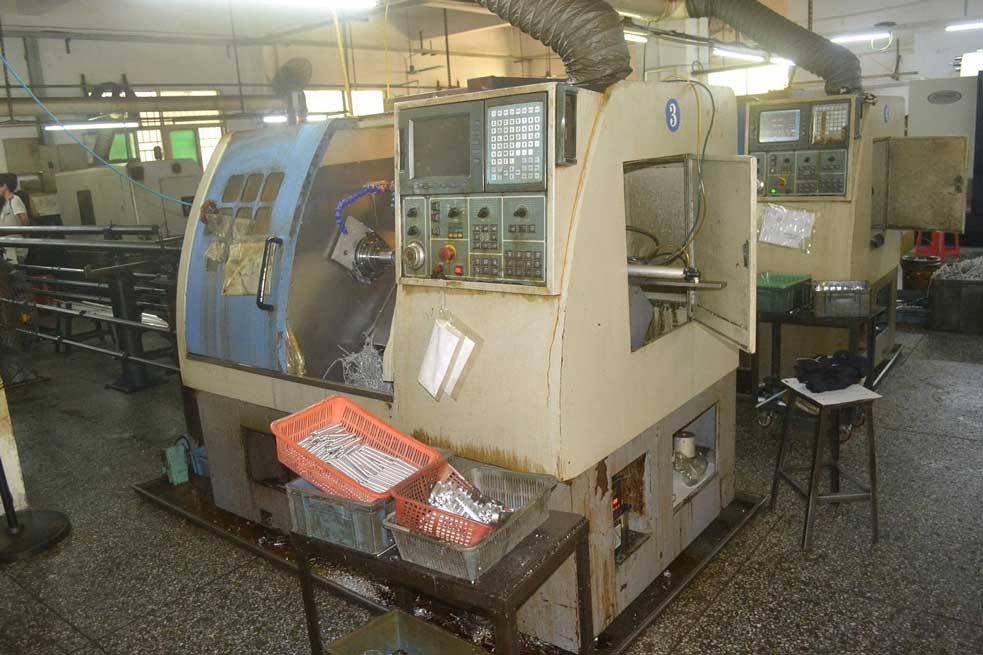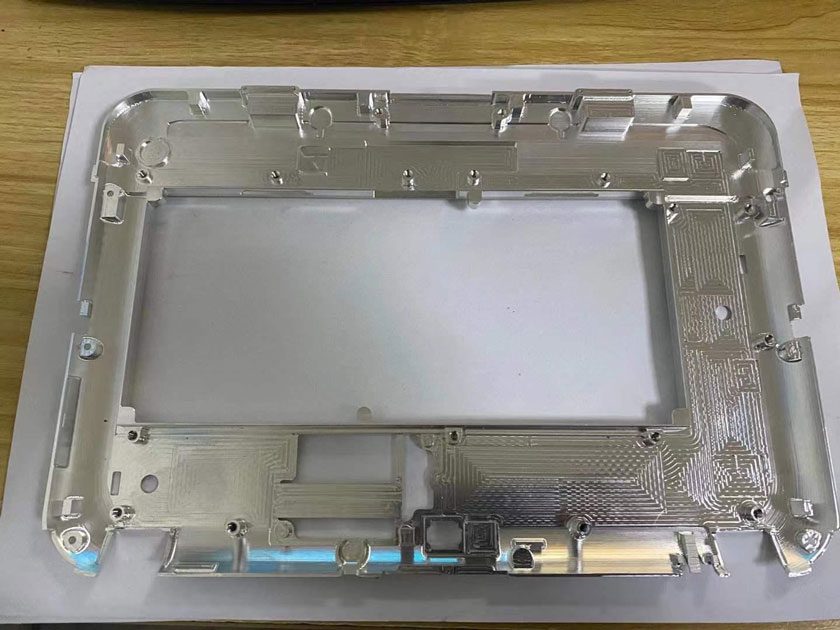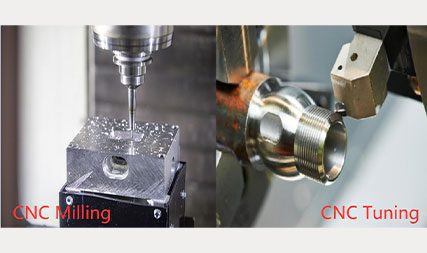What is the difference between CNC Milling & CNC Turning?
CNC milling and CNC turning are modern manufacturing machines processes. They have revolutionized the machining industry. These two machining techniques are overlapped for quite some time. But there are fundamental differences in these machining processes.
Understanding the difference between CNC milling and CNC turning machines and their functions helps manufacturers and industrialists make better decisions. Also, make it easier for them to opt proper manufacturing process for their projects.
Both CNC milling and CNC turning are subtractive CNC machining methods. They are computer numerical controlled (CNC). The processes selection is based on the specification needed for the parts. But to give you a concise answer, CNC milling is selected for complex components because of its dimensional flexibility. Whereas CNC turning mostly opts for cylindrical parts.
This article will explore the basics of CNC milling and CNC turning, such as their difference, working principles, programming methods, and applications. So let's dive in.
Table of Content
CNC Milling vs. CNC Turning
Both processes are computer-controlled subtractive manufacturing techniques. In CNC milling, a multi-point cutting tool is used for machining purposes. The cutting tool moves along the X, Y, and Z axes whereas, the workpiece is kept stationary.

In CNC turning, a single-point cutting tool is used to remove material from the stock piece. In turning, the tool moves along and across the rotating workpiece to reduce its length and diameter.

Below is a detailed discussion about the difference between CNC milling and CNC turning.
Difference between CNC Milling & CNC Turning
CNC milling and CNC turning are the two most employed CNC machining processes. These processes have led to the production of different parts with incomparable precision and accuracy. As much as they look similar and are used as complementary for each other, they strike a difference in many ways. Their working principle, functions, programming, and applications are pretty contrasting. Below are some of the significant attributes that make these two processes different.
1.Working principle
Both CNC milling and CNC turning are extensively used to produce accurate and precise parts across the globe. Manufacturers employ these machining processes for different specifications required in the parts. We have mentioned below the working principle of CNC milling and CNC turning to understand each process better.
In CNC milling, the workpiece remains in one place. While the machine tool or cutting tool moves and rotates around it, removing the unwanted material using various tools from the workpiece to bring in the required shape. A spindle holds the cutting tool in CNC milling, which rotates at pre-set RPMs. It uses multi-axes tools such as three axes, four axes, and five axes to mill the wide range of material. These multi-axes tools allow it more flexibility to machine the workpiece.

On the other hand, in CNC turning or "lathes," the cutting tool is stationary. This cutting tool remains at the same position while the workpiece rotates against it to machine the material and bring the desired geometry. In CNC turning, the chuck grips the workpiece, and the spindle move against the tool. A single-point cutting tool attached to a turret removes the material from the spinning workpiece. The geometry required for the part determines the CNC turning's tool, spindle, and speed.
2. Programming methods
CNC machines are the core manufacturing process used for sophisticated and accurate parts production in various industries. These processes would be hard to execute without the machines like CNC milling and CNC turning. Without G codes and M codes, these machines can't be programmed and function properly.
i. What is G – code?
It is the most popular programming language and is responsible for the movements in CNC milling and turning machines. We have gathered lists of G code used in CNC milling and CNC turning. Such as how to move, when to start, when to stop, Etc.
•G-code in CNC milling
•G-code in CNC turning
ii. What is M – code?
These codes are a set of additional commands for non-geometric actions. They are referred to as miscellaneous codes because they are used for non-cutting activities. M-code controls to flood the machine with coolant, stop the program and shut it off when the temperature drops. These codes also vary according to the machine. Below are the M codes for CNC milling and CNC turning.
•M-code in CNC milling
•M-code in CNC turning
3. CNC machines Programming Softwares
CNC machines like milling and turning require programming software to instruct the machines that control the specific operations and help produce the parts. This software improves the automation of the equipment and the efficiency of the manufacturing process. Without this software, the machinists cannot run the machine and produce parts. Let's look at the common software used in programming CNC milling and CNC turning.
•AutoCAD.
•Inkscape.
•Autodesk Fusion 360.
•SOLIDWORKS.
•Easel Software.
•Carbide Create.
•VCarve Pro.
•Mesh CAM.
Applications of CNC Milling
CNC milling is continuously evolving with time and provides more complex and functional parts faster. Its application is everywhere, from tiny parts in spacecraft to large ship propellers. Many industries around the world depend upon CNC milled parts. For example, the electronics industry uses this method for tiny engraved figures, machined holes, depressions, and other complex features in electronics. Because of its precision, oil and gas use pistons, cylinders, rods, valves, and pins produced through CNC milling. Medical industry use prosthetics made from CNC milling because of its unique and precise design.

Applications of CNC Turning
CNC turning has a long list of its applications. It is one of the most widely used CNC machining techniques. From screw to highly complex components, CNC turning is employed for producing different parts for many industries. Because of its precision, the aerospace industry used probes, shafts, joint connectors, and fasteners made through CNC turning. Hydraulic valve, sensor housing, valve housing, pipe joint, sensor metal shell, and many other auto parts are also manufactured using CNC turning. Military industry parts such as spacers, engine components, airframe parts, and avionics are also the art of CNC turning.

Conclusion
This article discusses the differences and applications of CNC milling and turning to give you an idea about both processes. While both these types perform different functions and deliver distinct features, they also come under the term CNC machining. This means they can complement each other in many applications to produce impeccable parts with precision.
After giving this article a read, you can now understand the functionalities, working principles, and technicalities of both machining techniques and can choose the best option for your project.
If you are looking for a supplier with modern technological equipment to provide accurate CNC milled and CNC turned parts, then look no further. Worthy Hardware can produce precision parts from prototype to large volume. Our unique quality control system ensures you receive the most delicate quality parts for your applications. With more than 20 years of experience and skilled engineering teams, we have completed hundreds of projects for companies across the globe.
Get your quotation real quick by filling out the form or writing to us.
Worthy Hardware is a CNC manufacturing and sheet metal fabrication company,including CNC machining services,CNC milling services, CNC turning services, laser cutting services and stamping services.Call us +86-76989919645 or email us [email protected] for more discounts for your projects.

